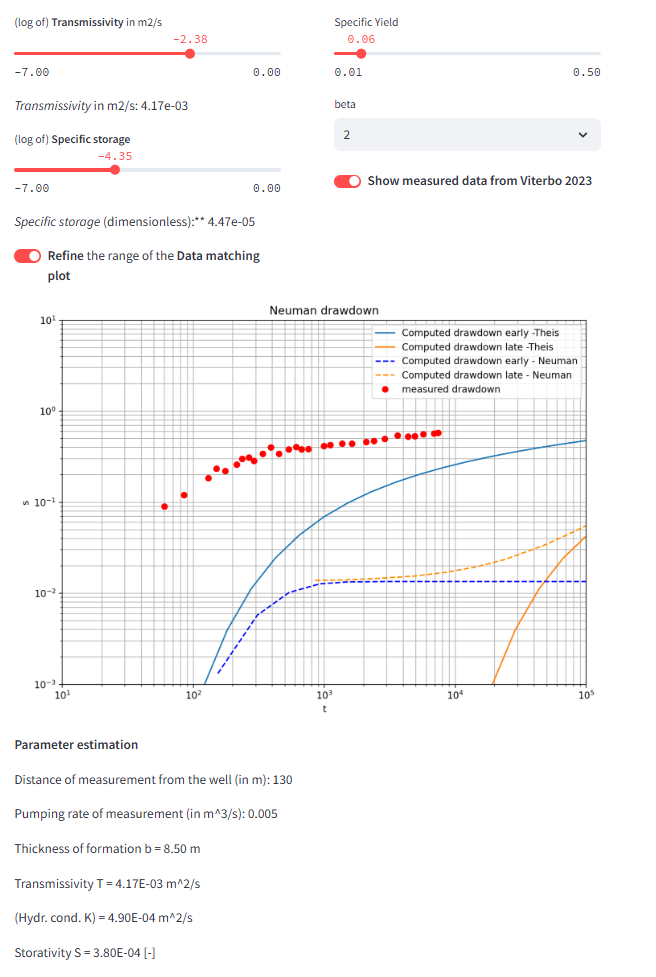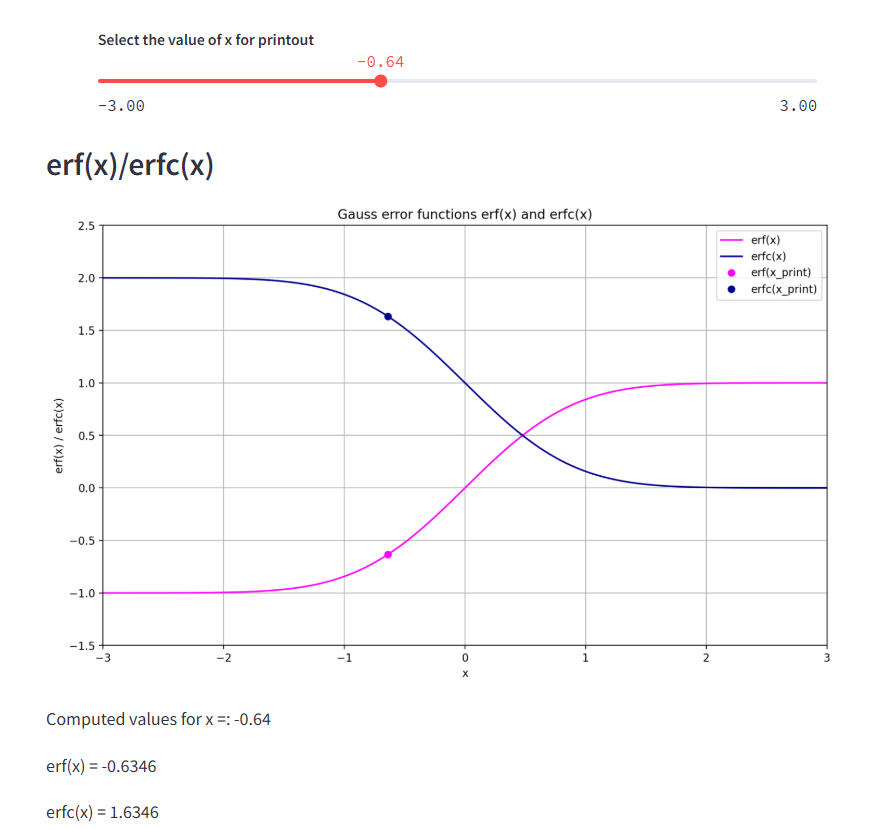Streamlit Apps for the topic
05 Applied Hydrogeology
Advanced Transport
Understanding the Neuman solution for unconfined aquifers
ALL OF THE FOLLOWING NEEDS TO BE ADAPTED
General explanation and credit
General situation
We consider a aquifer with constant transmissivity. If a well is pumping water out of the aquifer, radial flow towards the well is induced. To calculate the hydraulic situation, the following simplified flow equation can be used. This equation accounts for 1D radial transient flow towards a fully penetrating well within an unconfined aquifer without further sinks and sources:
\[\frac{\partial^2 h}{\partial r^2} + \frac{1}{r} \frac{\partial h}{\partial r} = \frac{S}{T} \frac{\partial h}{\partial t}\]Mathematical model and solution
Theis solution for confined aquifers
Charles V. Theis presented a solution for this by deriving
\[s(r, t) = \frac{Q}{4 \pi T} W(u)\]with the well function
\[W(u) = \int_u^{+\infty} \frac{e^{-\tilde{u}}}{\tilde{u}} d\tilde{u}\]and the dimensionless variable
\[u = \frac{S r^2}{4 T t}\]Neuman solution for unconfined aquifers
ToDo: Provide explanation and theory here
These equations are not easy to solve. Historically, values for the well function were provided by tables or as so-called type-curve. The type-curve matching with experimental data for pumping test analysis can be considered as one of the basic hydrogeological methods. However, modern computers provide an easier and more convenient way to solve the 1D radial flow equation based on the Theis approach. Subsequently, the Theis equation is solved with Python routines. The results for the measured data are graphically presented in an interactive plot.
The red dots are the measured data.

You can access the app here: https://neuman-s-t-plot.streamlit.app/
Visualization of erf(x)/erfc(x)

You can access the app here: https://erf-erfc.streamlit.app/